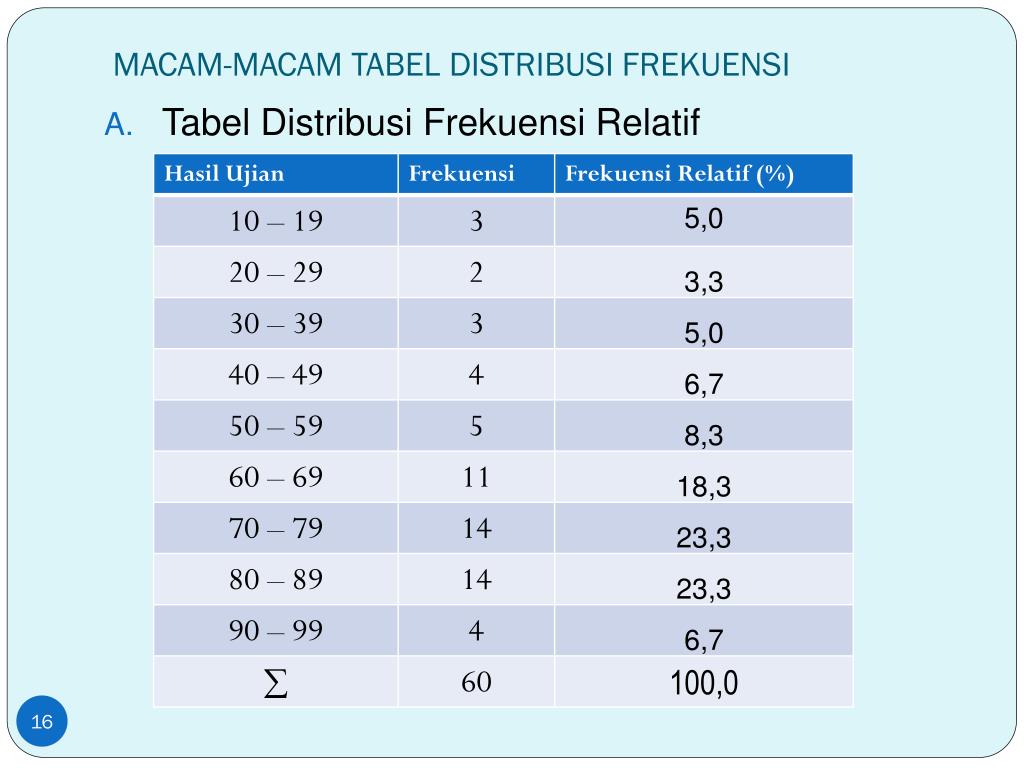Frequently Asked Questions (FAQs)
1. What is the difference between distribusi frekuensi and distribusi probabilitas?
Distribusi frekuensi refers to the organization and presentation of data in a tabular form, whereas distribusi probabilitas focuses on the probability of different outcomes or events. While distribusi frekuensi deals with observed frequencies, distribusi probabilitas deals with theoretical probabilities.
2. How can I determine the number of intervals for distribusi frekuensi?
The number of intervals for distribusi frekuensi depends on the size of the dataset and the desired level of detail. Generally, it is recommended to have around 5-15 intervals for a clear representation of the distribution. However, the choice of intervals also depends on the nature of the data and the research objectives.
3. Can distribusi frekuensi be used for qualitative data?
Distribusi frekuensi is primarily used for quantitative data, where values can be measured or counted. However, it is possible to use distribusi frekuensi for qualitative data by converting it into a categorical or ordinal scale. For example, if you have survey responses with qualitative options, you can assign numerical values and then calculate the distribusi frekuensi.

